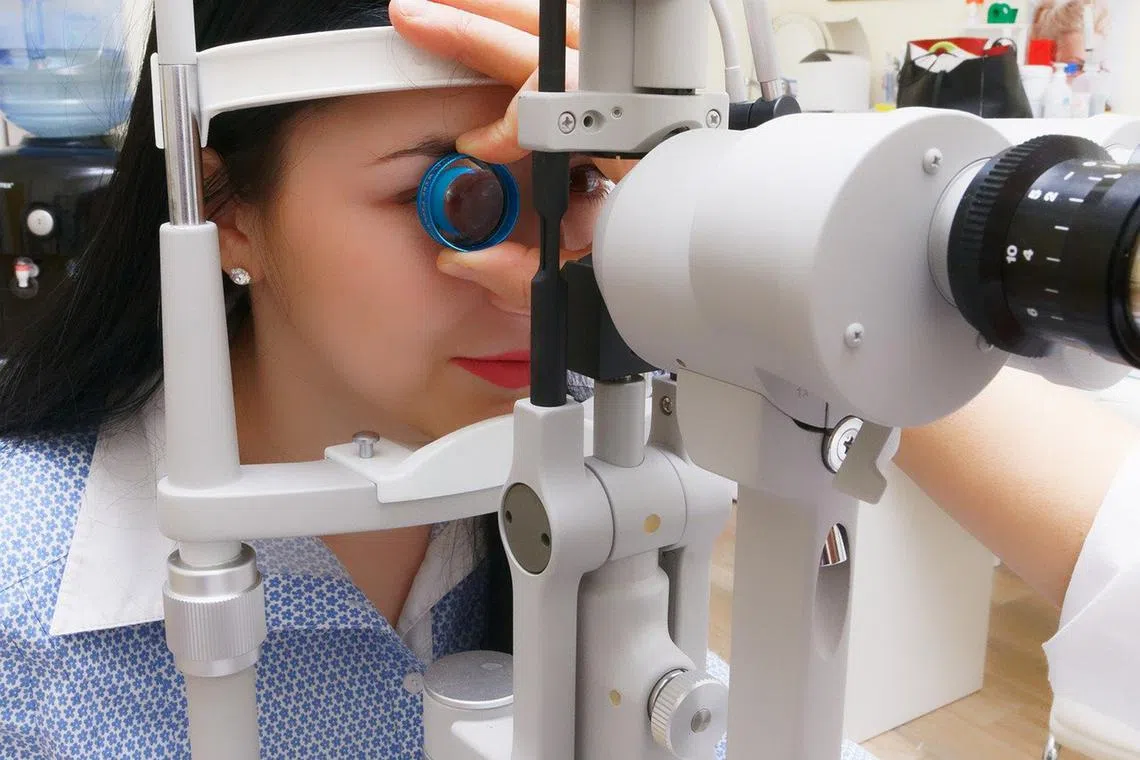Rare genetic eye conditions not so rare after all: SNEC study
Sign up now: Get ST's newsletters delivered to your inbox

Inherited retinal diseases are quickly becoming an important group of eye diseases tackled in Singapore.
PHOTO: PIXABAY
Follow topic:
SINGAPORE – Inherited retinal diseases (IRD) are not as rare here as previously thought, a research programme at the Singapore National Eye Centre (SNEC) has found.
IRDs are a group of genetic eye conditions which cause gradual and sometimes complete vision loss. The vast majority of such diseases have no cure.
“When you read about these conditions, you will hear that these are extremely rare. But when we started being a bit more systematic in identifying these patients, we found that actually it’s far more common than we would have thought, and often under-diagnosed,” said Dr Beau Fenner, one of the programme’s researchers.
“To be honest, no one really knows how many individuals in Singapore have inherited retinal disease,” he added. But he put the number at between 3,000 and 5,000 people.
IRDs are quickly becoming an important group of eye diseases tackled in Singapore, and efforts to unpack these often poorly understood conditions are growing.
With genetic eye conditions now the primary cause of blindness among working-age adults in developed nations, SNEC in October also established its Ocular Genetics Service (OGS)
Complementing each other, the OGS runs concurrently with the research programme by SNEC’s research arm, the Singapore Eye Research Institute. Ongoing since March 2021, the institute’s programme has more than 1,200 participating patients.
“Our clinical research programme is probably the largest of its kind in the region,” Dr Fenner said, adding that around 90 per cent to 95 per cent of SNEC’s IRD patients have been registered in the programme.
Participants include SNEC’s new and existing IRD patients, as well as their relatives when relevant. The programme collects information such as participants’ clinical records which are relevant to their condition.
Beyond guiding research for potential treatments, the programme’s collection of patient records helps doctors reach out to individuals with IRD as new treatments emerge, Dr Fenner said.
This is especially helpful, as some patients may have chosen not to return for follow-ups at SNEC, given that there is no cure for their condition.
A key goal of the research programme is to identify the most common inherited retinal conditions here.
“If we’re going to spend a lot of time and money developing therapies for inherited retinal conditions, we should be looking at those which matter to Singapore,” said Dr Fenner.
He estimates that SNEC, which sees roughly 50 per cent of Singapore’s subsidised patient volume, sees only about 20 per cent to 30 per cent of all people with retinal dystrophy here.
The study has since identified retinitis pigmentosa as the most significant condition, accounting for about 50 per cent of all inherited retinal diseases in Singapore.
While there are many gene mutations that could cause the disease, Dr Fenner said a mutation in the EYS gene is the most common cause for the condition in Singapore and particularly prevalent in individuals of southern Chinese descent.
One hope researchers have for the programme is to better equip clinicians to recognise these conditions and decode their inheritance patterns, which enables them to provide more holistic advice to affected patients.
Dr Fenner said: “When we first started this work, a lot of clinicians thought we didn’t have all these different interesting inherited retinal conditions in Singapore – but that’s turned out not to be the case.
“These conditions are all here. It’s just whether there are people able to diagnose them. Some of these conditions are quite challenging to diagnose.”
In contrast to the United States or Europe, where similar research efforts have been going on for decades, Dr Fenner said there is still not much known about genetic eye diseases in this part of the world.
“It’s relatively recent here in South-east Asia, and so we’re still in the beginnings of our research journey to understand what matters for Singaporeans,” he said.


